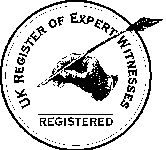Possession of Extreme and Prohibited Images
Prohibited Images
The Coroners and Justice Act 2009 creates the offence of possession of a prohibited image of a child.
It is my understanding that a prohibited image is an indecent image of a child that is not a photograph (or movie). Examples of prohibited images might include drawings and cartoons that show children. Notably, there is no offence of "making" a prohibited image.
The possession offence requires that the image should have been deliberately and knowingly saved to the computer. The act of browsing the Internet and viewing prohibited images on a computer screen is, arguably, not an offence because no image is saved and no image is possessed.
Extreme Pornography
The Criminal Justice and Immigration Act 2008 creates the offence of possession of extreme pornographic images.
Examples of extreme images might include pictures of rape or bestiality. Notably, there is no offence of "making" an extreme image.
The act of browsing the Internet and viewing extreme images on a computer screen is, arguably, not an offence because no image is saved and no image is possessed.
Displaying Images on a Computer Screen
The lack of a "making" offence appears to limit the circumstances in which an offence can be committed. It may be that a punter can spend all day looking at extreme and prohibited pictures displayed on web pages and be innocent of any crime. An offence is only committed when one of the pictures is saved onto the computer.
In a case where no pictures were saved onto the computer, I have heard it argued in Court that a Defendent was in possession of pictures while those pictures were being displayed on the screen. It was argued that the Appeal Court said, in the case of Porter (2006), that possession of an image occurred if the Defendent "has the ability to produce it on his screen, to make a hard copy of it, or to send it to someone else".
The Court, in Porter (2006), was concerned with images saved onto the computer. It may be that it is not possible to be in possession of an image displayed on screen as part of a web page because some part of the control of the image rests with the author of the web page. For example, a web page author can change a web page at any time. We see this on, for example, news websites were the first page of the website changes as new events occur and get reported. Additionally, the web page can include commands within the web page that cause the page to "refresh", that is, to re-display itself.
The headline page of the NBC News website is an example of a website that automatically refreshes itself (November 2012). I might browse to the NBC News website and see that the top story concerned an event in New York. The web page might display a picture of the Empire State Building. While the web page was displayed on the screen of my computer, the people at NBC News might change the web page to have a top story about an event in London with the page displaying a picture of Tower Bridge. The NBC News web page would refresh itself, without any action by me, and the picture of the Empire State Building would disappear and be replaced by a picture of Tower Bridge. Was I in possession of the picture of the Empire State Building if I could not stop it from disappearing from my screen and if I had no way to re-display it?
Computer Examination
There are many ways that images can be stored on a computer without the images having been deliberately and knowingly saved. Images are often saved by automatic processes in software and these processes can occur without the knowledge of the person using the computer. An expert witness examination would identify images that have been saved unknowingly and other images that are outside the rules that govern "possession"..



